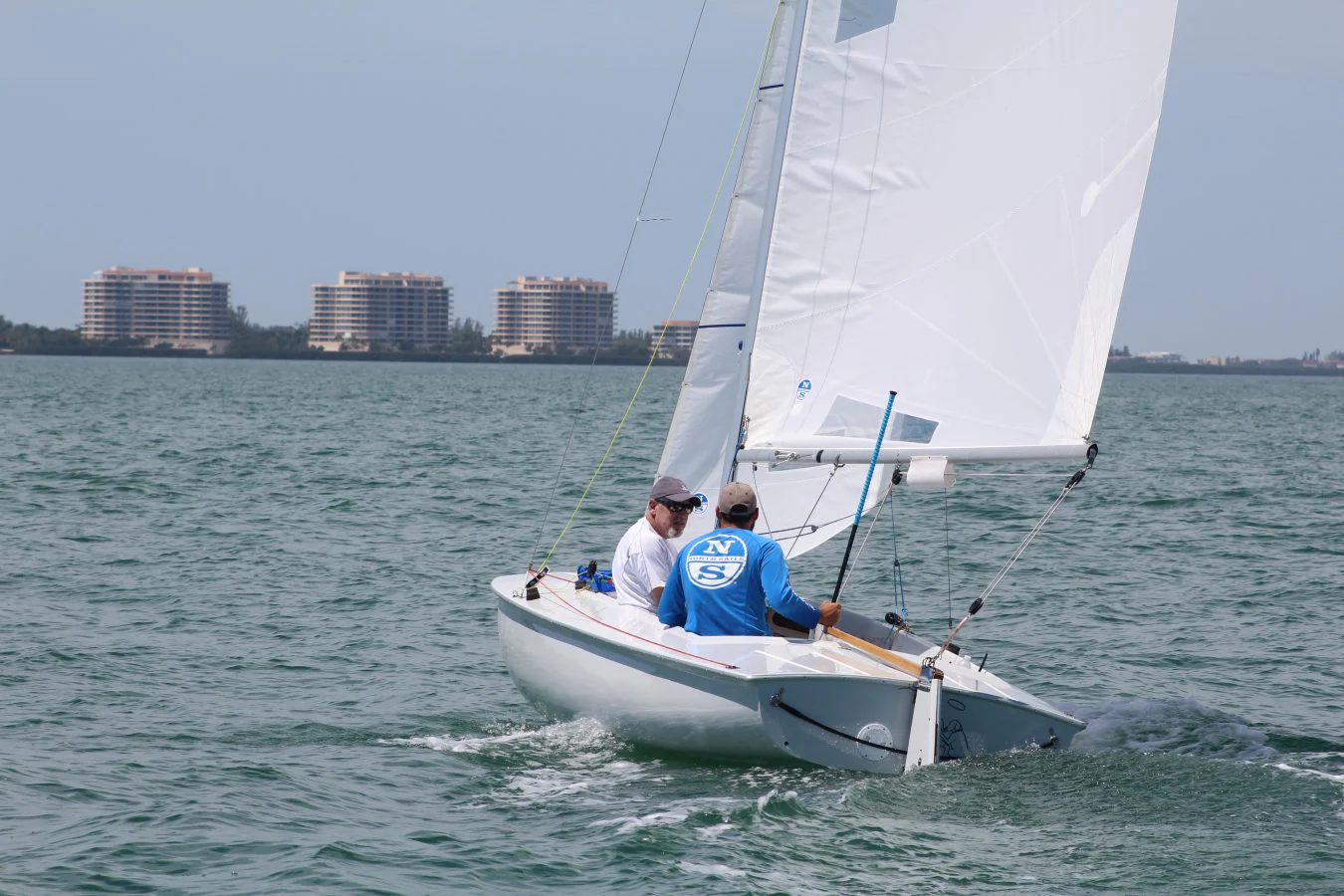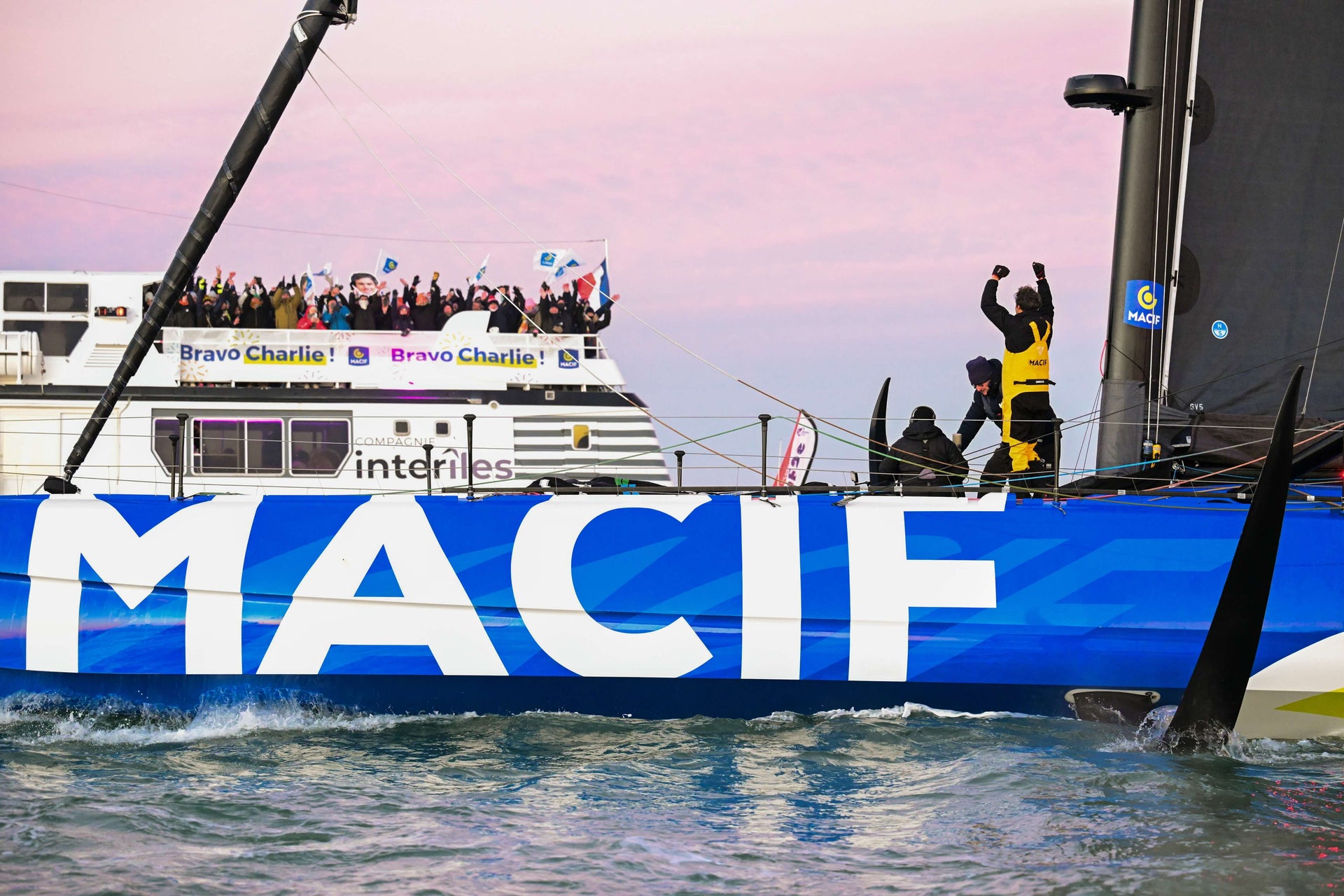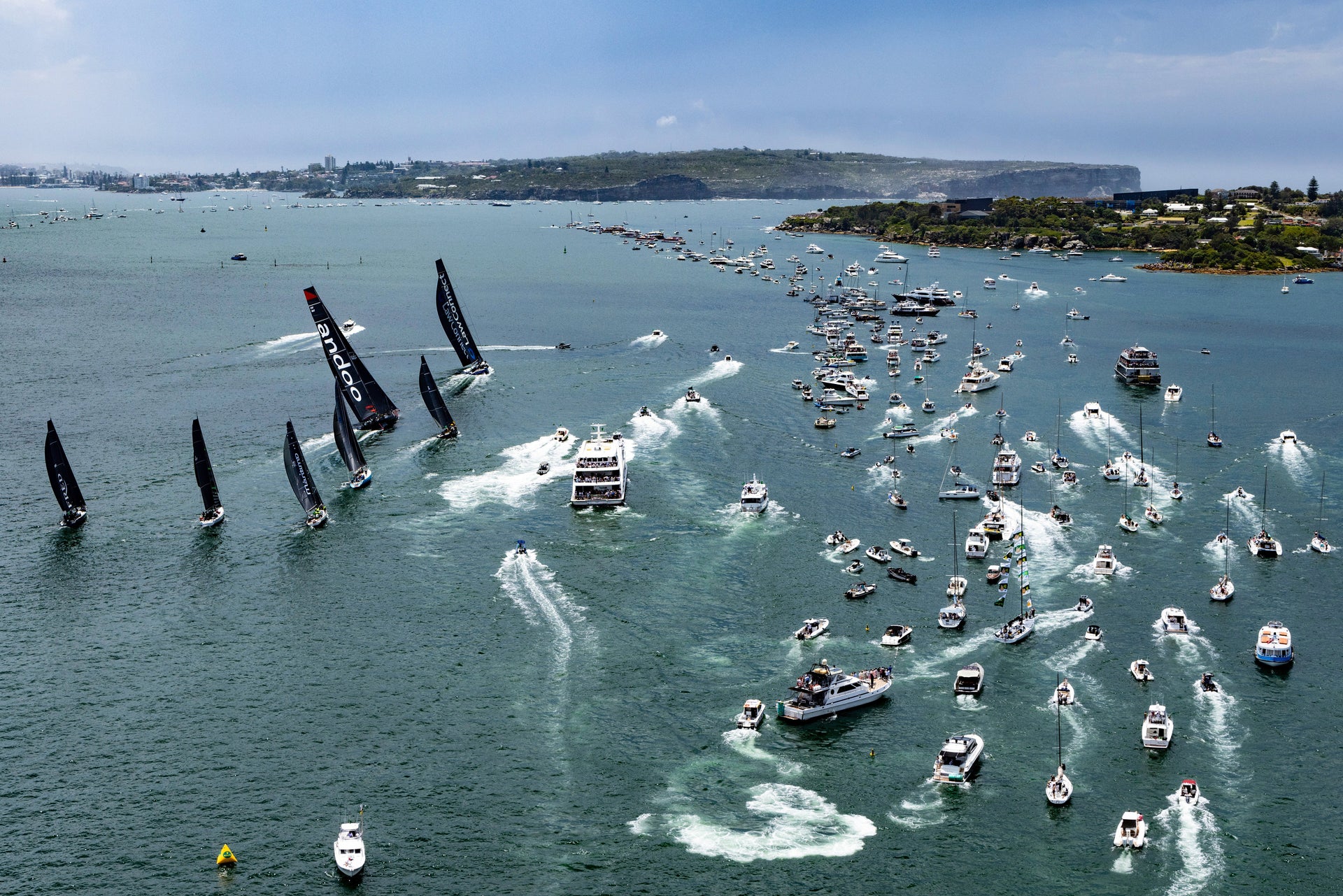FLYING SCOT MIDWINTERS - AN EXERCISE OF PATIENCE
FLYING SCOT MIDWINTERS: AN EXERCISE IN PATIENCE
Maximizing success in big fleet racing with unpredictable conditions

As a 9 year old learning to race on Sarasota Bay, I learned quickly what a beautiful venue it was to race small sailboats. From the tropical colors, warm climate, and warmer hospitality, the Sarasota Sailing Squadron has always been one of my favorite places to go back to visit and sail. Having done so much sailing there over my life, I thought I had the venue pretty dialed in from a predictability standpoint. If it’s out of the North or South, it is a boat speed race – limit boat handling, play a side, and be conservative. If it is from the West, it’s a seabreeze – play the oscillations and look for puffs coming off of Longboat Key. If it is from the East, favor the left but keep your eyes open as the offshore breeze can be all over the place. Or so I thought…..
This year’s Flying Scot Midwinters was anything but predictable and the key to success was patience along with quick problem solving and a “never say die” approach to the shifts. PRO Fairlie Brinkley and his team on the Race Committee did a masterful job of keeping the racing square and fair through 40+ degree shifts and wind speeds that didn’t always get along with the class!

DAY 1
We all knew that day 1 of racing was a “survival day” with light winds predicted out of the East – the most unstable direction on Sarasota Bay. With no discards in the series, it was going to be imperative to try to avoid the big mistakes and stay as conservative as possible to try to keep the point total down. The regatta was not going to be won on Day 1 but it could certainly be lost if you got caught on the wrong side of a beat. Doing our homework before each race was super important.
- We found it very useful to be out on the race course early so we could sail up the beat a couple of times and learn what the wind was doing.
- We found that there were definitely shifts in both directions but the shift that seemed to stay the longest was from the right.
- We also learned that getting into the velocity (which is pretty easy to see on the sea green waters of Sarasota Bay) was of paramount importance.
- It was also key to remember not to go too much into “cover the fleet mode” near the top of the race course. There were too many shifts and velocity changes in the last quarter of the beat with hundreds of boat lengths to be gained or lost.
Taking in all that we learned in our pre-race home work we developed a game plan to error towards the right side but keep our heads out of the boat and when all else failed – point the boat at the mark. Something that sounds very basic but when you can be confident that the wind will generally not stay steady for more than about 2 minutes, it’s crucial to spend every minute on YOUR lifted tack. Even if other boats had more of a lift or more velocity – there was nothing you could do about it. So just point your boat at the mark, be patient, and look for the next shot of pressure.
Throughout the 2 races, we found ourselves in some tough spots where the frustration threatened to get the better of me. But we tried to remain patient and remember our homework. A bit of discipline was needed to to keep “hitting singles” instead of going for a home run. This mentality allowed us to pick off the few boats in each race to finish the day having accomplished our goal – SURVIVING!
DAY 2.. Too much wind, no racing.

DAY 3
With day 2 cancelled due to high winds, we knew day 3 was going to be a long 3 race day. With a direction predicted to stay mostly out of the South, I thought I could rely on my years of experience on Sarasota Bay and plan on leaning on boat speed and good starts to bang out some good races. But this day proved to be a real challenge as the breeze was anything but steady.
After the first beat of the first race, it was clear that the sea breeze was going to have its way with us throughout the afternoon. With the sea breeze trying to pull the wind hard right, and the gradient fighting to keep the breeze out of the SE, we saw wind shifts upwards of 40 degrees with velocity differences in a range of 10 knots.
About 3 minutes after the start of the first race, we found ourselves about 500 yards behind the leaders. And we had a great start! After a couple minutes of pure panic, we remembered that if it was possible to get that far behind so quickly, it was sure possible to make it back quickly too!
We were committed to the left side so we found our opportunities to get back to the right and in touch with the fleet when we could so that we could have a chance at a big gainer on the downwind.
It is crucial to remember that in this sort of condition, the downwind legs have as much to be gained as the upwinds legs. Keep your eyes looking back and find the big pressure. Don’t be afraid to change course drastically (by gybing or heating up) in order to get into the maximum pressure.
Keeping our heads out of the boat, we were able to rally on the run and then see the big pressure working its way down the right side before we turned to go back upwind. Committing hard to the right allowed us to get back into the top three and hang onto it for the final run. This comeback proved to be the saving race of our regatta. For the rest of the day we favored the right as the sea breeze kept trying to work its way onto the bay, but we found several nice gains by finding some of the remaining gradient on the left. This was a day that left most of the fleet with raging headaches as you could never stop thinking and planning ahead for your next move.
While boatspeed is always king, this regatta had everything to do with keeping your head out of the boat and playing the proverbial chess game to set yourself up for your next play.
We worked on dividing the race course into ¼ ‘s with the top ¼ being about 1000 yards past the weather mark. By continuously looking at each ¼ we were able to try to plan out the next step based on what we saw at that moment.
For sure, our predictions were not always correct, but keeping patience and quick thinking at a premium, we could keep the boat in spots where we wouldn’t lose too much if we got it wrong, but that we were in a position to make big gains if we got it right. This approach let us hit lots of singles throughout the week without the accidental strike-out by going for a home run. This was an important reminder about how to approach big fleet racing in unpredictable conditions.
A HUGE thank you goes out to the Sarasota Sailing Squadron and all it’s volunteers. We will be sure to go back at every possible opportunity to race our Flying Scot.
| 2018 Flying Scot Midwinters | |
| 1. Zeke Horowitz / Jay Horowitz | |
| 2. David Ames / PJ Buhler * | |
| 3. Jeff Linton / Andy Hayward | |
| 6. Tyler Andrews / Andy Fox | |
| 8.John Kreidler / John Wake | |
| 9 .Ned Johnston / Ryan Donahue | |
| 10. Tom McNally / Cindy Taylor / Mike Taylor | |
| * Denotes Partial North Sails Inventory | |
Full results
Learn more about North’s Flying Scot designs.




























